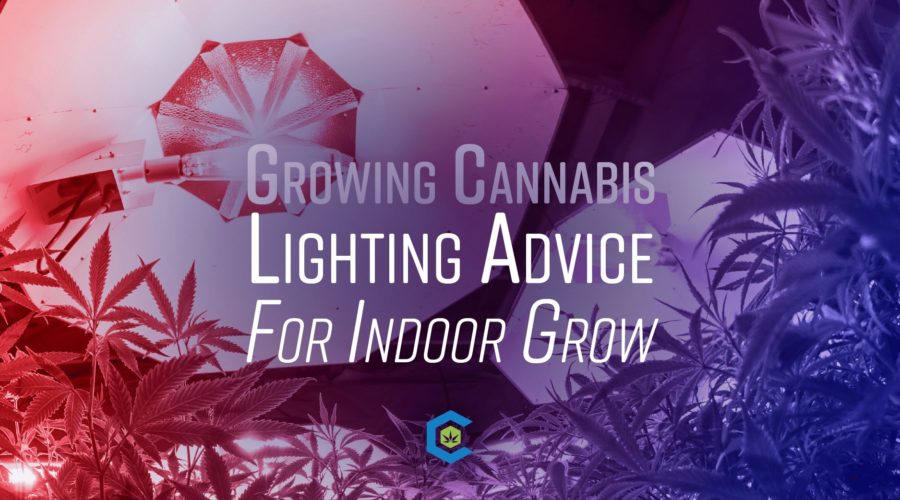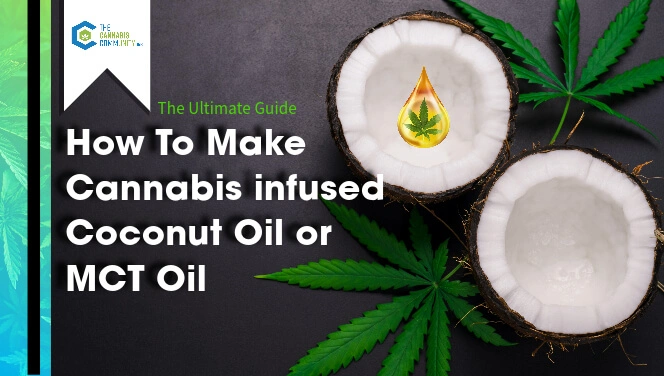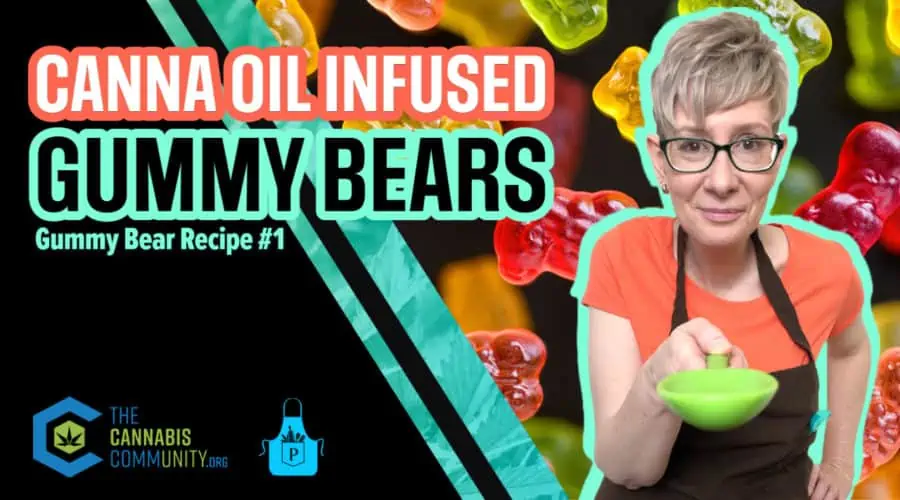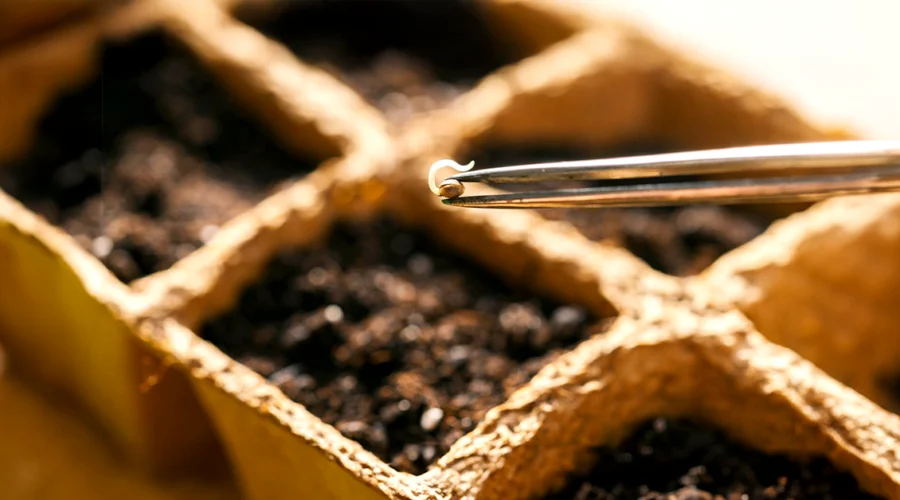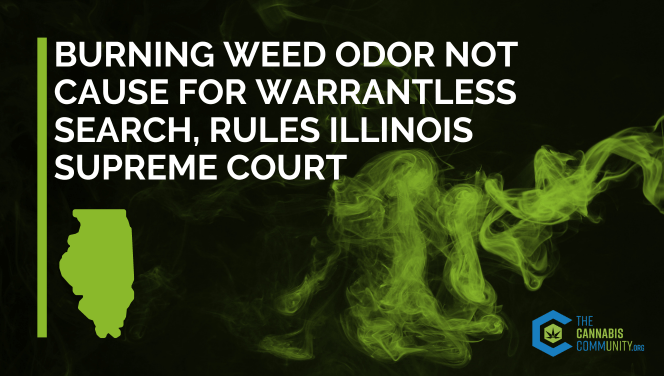Practical Lighting Advice to Start Your Indoor Grow
Table of Contents
For many medical marijuana patients in Illinois, concerns of medicine shortages and rationing, inflated prices due to recreational demand, and crazy lines becoming barriers to getting their necessary medicine.
Anyone concerned by these factors should seriously consider growing their own medicine at home.
The change in the law now allows medical card patients to grow their own medicine from home, with some restrictions. It is easy to get started, and you don’t need to be an expert (Remember you are limited to 5 plants!).
This article is part of a series written to make entry into indoor gardening less complicated. For those starting, lighting is the most complicated, confusing, and most expensive (and therefore risky!) part of getting started growing their own medicine.
It can be intimidating to get started, but if you persevere, you’ll be greatly rewarded!
The updated Illinois law will conditionally allow medical marijuana cardholders to grow in a secure indoor location or greenhouse.
Considering the extensive cost of a secure greenhouse, this article will assume an indoor growing situation. We will try to make the most out of a limited area typical for an indoor gardener getting started.
To begin with…
I will explain each type of light in turn, but to begin planning, you’ll first need to consider some basic facts about your situation:
One of the first things you’ll need to consider is how much space you can devote to the entire indoor gardening enterprise.
Another consideration is that the growing area must be in a climate-controlled environment. Anywhere from 60-75 degrees without lights going. Remember lights heat up an area!
The area also needs access to electricity and at least indirect ventilation. The quality of these factors will play into what kind of lights are possible and recommended for your case specifically.
For instance, don’t have air conditioning directly in the grow area? You won’t want to do HID lighting then. HID lamps require aggressive active cooling management to prevent overheating problems and fire hazards.
Not going to have much ventilation in the area? Perhaps fluorescent lighting is for you. You should also consider your electrical needs and limitations.
Make sure your electrical fuse box and home wiring are modern and up to code. If you aren’t sure, consult an electrician.
Growing cannabis indoors uses a heavy amount of electricity. Are you planning on powering your whole garden through 125 feet of household extension cord? No high power lights. Next, we need to consider…
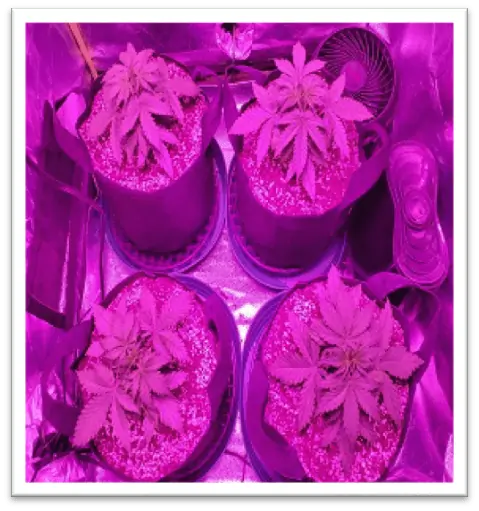
What makes a good light?
Cannabis is a photosensitive plant. That means that its life stages are based upon the quality and duration of sunlight that changes with the seasons.
We need to reproduce this light when growing indoors to progress cannabis through to its final life stage.
Cannabis has different lighting needs during each of its life stages. Before we get into that, let’s talk about what makes a good grow light.
Light Spectrum: While light comes in many forms across a spectrum from visible to non-visible light, plants need a specific radiation spectrum that is larger than the visible light spectrum.
Photosynthetically Active Radiation (PAR) is what we call this spectrum that plants use. This means we only need to consider the ability of our lights to make PAR. Because of this, how “bright” a light seems to the human eye is mostly irrelevant.
Photosynthetic Photon Flux Density (PPFD): This is the measure we judge PAR. When we describe how much light each life stage of cannabis needs, we describe this requirement in PPFD.
For example, seedlings have a minimum and max PPFD at each life stage that it will tolerate. Something important to keep in mind is that PPFD readings will differ depending on where you measure.
For example, since most lights are more focused directly under the light, the edges and corners of the light footprint will be substantially weaker (no more than 50-60%).
As such, please remember this when trying to meet the PPFD requirements for a grow area; the requirement goes for the entire canopy. Not just directly under the light.
Power usage: This is how many actual watts the light consumes when plugged into the wall and turned on. However, some manufacturers have a “power rating” that suggests what wattage of incandescent or HID bulb the garden light could, hypothetically, replace. Ignore this number.
Find the actual wattage drawn or consumed on the manufacturer or merchants’ websites. If it’s not listed, then move far away from that light. This is the number I use to calculate electrical efficiency in the next section.
Electrical Efficiency: I am going to describe the electrical efficiency of a light using the metric of Photosynthetic Photon Efficacy (PPE).
This is a measurement of how much PAR is put out per watt. This number varies depending on what settings the manufacturer sets when assembling the light, giving a range of PPE values.
What is important is that the higher the number the better. This is one of the most important factors when choosing a light. Get the highest number your budget and situation allow!
Penetration: This is a description of how well the light can penetrate into the garden’s leaf canopy onto lower leaves. The big factor here is the inverse square law of light intensity.
This principle says that the more intense a light source is, the further the radiation will travel from that source. Getting good penetration is a great way to increase your medicinal yield at harvest.
However, you understand that there are advanced gardening techniques for compensating for lights with poor penetration.
Area recommendations: In this section, I will recommend several real watts of the particular light in question per square foot of flowering stage canopy.
I use flowering stage canopy because this is the stage that requires the most light intensity of the life stages.
You will use less wattage per foot during the seedling and vegetative stages.
Please keep in mind that almost all merchants and manufacturers severely overstate the area their light is productive in.
Heat: Here is where I describe anything you need to know about the light in regard to heat management.
Cost: All costs were calculated using reasonable prices on Amazon.com
Brands to avoid: Here I list some common brands that you should avoid, if I have any recommendation about that. They are either poor investments, poor quality, or both.
Lighting Needs
Cannabis has three major life stages and each stage has different lighting requirements. The higher within the range you can go, the better. However, giving any more intense light than listed will lead to your plants’ burning and death.
- Seedling Stage: 200-400 PPFD across the entire canopy.
- Vegetative Stage: 500-700 PPFD across the entire canopy.
- Flowering Stage: 800-1500 PPFD across the entire canopy.
Kinds of Lights
Fluorescent Lighting (CFL, T5, T8, or T12)
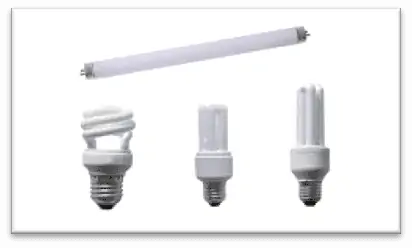
Your primary consideration for this kind of light is that it’s great for seedlings. Only use for vegetative and flowering stages for those on a shoestring budget or otherwise desperate. Long the favorite of the stealthiest of stealth grows, the fluorescent also has a long past as the grow light of choice for those in a pinch and on a budget. This light is best if secrecy is top priority. It doesn’t require as much heat management nor as much ventilation, so it doesn’t require much space. The tradeoff for these benefits is that fluorescent is the least productive per watt of the different lighting methods.
- Photon Efficacy: 0.9 PPE
- Heat: Very low heat. While fluorescent doesn’t put out particularly intense light, it efficiently converts much of the input electricity into PPE and not into heat.
- Area Recommendation: fluorescent has the highest requirement. 60-100 watts per square foot of canopy… the more the better!
- Penetration: fluorescent gets poor canopy penetration due to being so weak a light source at the origin of light. But it’s better than you might imagine due to how the light is so diffuse that it scatters well.
- Cost: $0.15- $1 per watt. These bulbs last 5, 10, or even 20 years!
- Lights to avoid: Name brand versions of these lights for best results. Avoid generic.
Old HID (Note: All HID bulbs emit some UV radiation. The amount varies and they’re sometimes shielded. But remember not to look at or work around a bulb with a broken outer glass jacket because UV radiation damages DNA, and this damage is cumulative.)
High Pressure Sodium (HPS)
The “Old King” of indoor cannabis growing, this light still gets great results. These days, new technology has led to a new generation of lighting surpassing this old reliable. Higher efficiency and lower heat lighting cause HPS to show its age.
Still, it’s in common use worldwide and still a workhorse in the industry. It gets great returns on medicine and its canopy penetration is renowned.
Just be sure you can deal with the heat. This light can be used for vegetative and flowering life stages, though its red-shifted light makes it shine during the flowering stage.
- Photon Efficacy 1.6 PPE-1.9 PPE.
- Heat: Like all HID lights, this produces significant heat requiring active cooling and environmental controls. Air conditioning is a must.
- Area Recommendation: At least 50 watts per square foot of flowering canopy.
- Penetration: A single, powerful, light source. As such, its canopy penetration is significant. This comes at the cost of the spread of the light being mediocre across Brands to avoid: Avoid cheap replacement bulbs, as these are where the quality varies the most. Get the quality bulbs.
- Cost: $0.20 per watt. However, when considering 5 years of replacement bulbs, the cost rises to $0.50 per watt. The fixtures are reasonably priced.
Some fixtures can fit both HPS and MH bulbs. Getting extremely efficient reflectors, inline cooling, and lenses that allow the lights to be hung closer to the plants without burning all are extra features that will cost you to upgrade.
Additionally, the bulbs need to be replaced every 10,000 hours, and they degrade severely throughout their lifetime, requiring punctual and regular maintenance.
Metal Halide (MH)
These lights have a similar history to HPS lights except that they are a bit less efficient and are heavily blue shifted light instead of red shifted light.
As such, they are best during the seedling, mother, and vegetative life stages with most people changing to an HPS light during flower. They can be used for flower life stage in a pinch. They are hot.
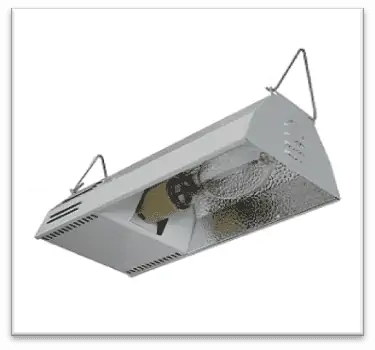
- Photon Efficacy: 1.2 PPE – 1.4 PPE. The least efficient of the HID lights is usually considered useful for only the seedling and vegetative stages of the cannabis lifecycle due to its heavily blue-shifted light spectrum.
- You can produce medicinal flower with it, but lack of red spectrum light and low photoelectric efficiency make this not recommended.
- Area: The minimum recommendations for this light is 50-60 watts per square foot of flower canopy
- Heat: Like all HID lights, this produces a significant amount of heat that will require active cooling and environmental controls.
- Penetration: single powerful light source. As such, its canopy penetration is significant. At the cost of the spread of the light being mediocre.
- Brands to avoid: Avoid cheap replacement bulbs, as the quality varies the most. Get the quality bulbs.
- Cost: $0.20 per watt. However, when considering 5 years of replacement bulbs, the cost rises to $0.50 per watt.
Getting extremely efficient reflectors, inline cooling, and lenses that allow the lights to be hung closer to the plants without burning all are extra features that will cost you to upgrade.
Additionally, the bulbs need to be replaced every 10,000 hours, and they degrade severely over the course of their lifetime, requiring punctual and regular maintenance.
New HID (Note: All HID bulbs emit some amount of UV radiation. The amount varies and they’re sometimes shielded.
But remember not to look at or work around a bulb with a broken outer glass jacket because UV radiation damages DNA, and this damage is cumulative.)
Ceramic Metal Halide (CMH)
This next-generation HID lighting is a modified MH setup changed to be more red-shifted. It’s more efficient than MH or HPS. Still puts out a ton of heat, but not as much as the Old HID.
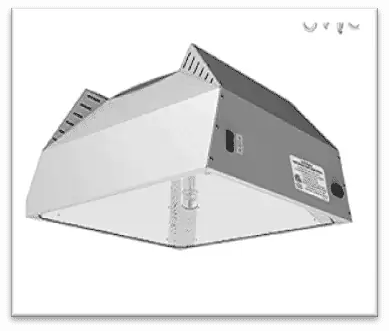
- Photon Efficacy: 1.9 PPE – 2.1 PPE.
- Area Recommendation: Being more efficient than HPS, the minimum recommendation is 37 watts per square foot of flowering canopy.
- Heat: Like all HID lights, this produces a significant amount of heat that will require active cooling and environmental controls.
- Penetration: Like HPS, this is a single light source. As such, its canopy penetration is significant. At the cost of the spread of the light being mediocre.
- Brands to avoid: Avoid cheap replacement bulbs, as the quality varies the most. Get quality bulbs.
- Cost: $.50 – $.60/watt initial startup cost. However, after buying 5 years of bulbs, the cost increases to about $1.25/watt. The fixtures are a bit more expensive than the Old HID fixtures, but I still consider them reasonably priced.
- Getting extremely efficient reflectors, inline cooling, and lenses that allow the lights to be hung closer to the plants without burning all are extra features that will cost you to upgrade. The bulbs last over twice as long, and their function is less reduced throughout their lifetime than Old HID.
Inexpensive LED
The infamous “Blurple” (Blue and Red) and “Full Spectrum” White 3 watt, 5 watt, and 10 watt LEDs. Not much difference between the two, though White LED produces less PPE because it is putting out more wavelengths of light with the same wattage.
And don’t let people badmouth these LEDs to you. They get perfectly acceptable results. If you can compensate for their major weakness: weak canopy penetration.
Please note that due to the difficulty and expense of testing equipment, there is currently a “wild west” of LED lighting going on right now.
The marketplace is full of deceptive advertising, irrelevant power ratings, bad or cheated testing, counterfeit parts from the “factory”, blatant lies and other bad faith practices.
This goes for Western companies and Chinese companies.
Do your research and try to buy a specific model (performance can vary greatly even within a single brand name) that other people have gotten good results from personally(Not Mars Hydro or Bestva).
Check Youtube videos for impartial third-party testing of products (avoid manufacturers’ videos), and remember that more expensive does not always mean a better deal.
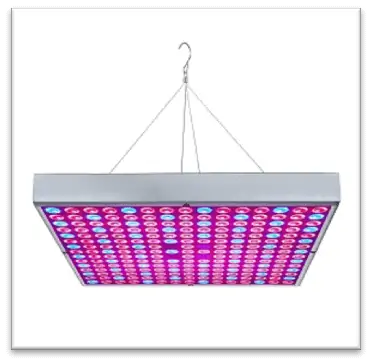
- Photon Efficacy: 1.9 PPE- 2.2 PPE.
- Area recommendation: Though it has similar PPE to CMH, I still recommend a minimum of 50 real watts per square foot due to the poor penetration of these lights.
- Heat: They are more efficient and create less heat per watt when compared to HID. They also radiate their heat away from the plants, behind the lights, allowing the lights to be placed much closer than HID. This one-two punch makes LEDs the heat management champs.
- Penetration: Hypothetically better light distribution due to multiple light sources scattering light but is hindered because its multiple weak light sources spread over a wide area (as the inverse square law tells us). Accordingly, these kinds of LED’s are hung much closer to the tops of the plants than HID methods.
- Brands to avoid: There are many but avoid Bestva and Mars Hydro. Avoid brands nobody has heard of.
- Cost: Not surprisingly, Inexpensive LEDs are an inexpensive way to get into growing your own medicine. Expect to pay about $0.30 -$0.70 /per watt. There is a wide variance of price because you can find these lights frequently on sale and because there is a difference in quality even between inexpensive LED models. If you get closer to $0.50-$0.70 per watt, you would be better served to buy a “knockoff” Quantum Board.
- Being an LED, the bulbs on these lights tend to last anywhere from 4-10 years depending on the manufacturer.
COB LED
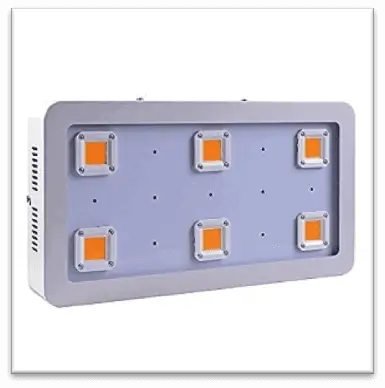
Chip-on-board or COB LEDs are a newer technology than inexpensive ones, but are considered “last generation” LEDs. They are slightly more efficient and have a tradeoff of more canopy penetration and light intensity in exchange for a “spotlight” effect and less light scattering.
While they aren’t terrible, I would almost never recommend these lights due to their terrible cost/efficiency ratio. Save for a Quantum Board style light.
- Photon Efficacy – 2.0 PPE -2.4 PPE. Slightly more efficient than inexpensive LED
- Area Recommendation: the minimum area recommendation of 50 real watts per square foot of flowering canopy remains the same because of the “spotlight” effect of the COB style LED.
- Heat: Slightly less heat than an inexpensive LED. But not really a noticeable amount. The same benefits of other LEDs apply; they radiate heat away from the plants. You can’t put COB as close due to the more intense light.
- Penetration: Due to a single powerful light source, there is deeper penetration into canopy compared to inexpensive LED. But as it’s not as intense as HID, it’s not as good penetration as HID. Will have a weaker performance on the edges and corners of the light footprint than other kinds of LED.
- Brands to avoid: Try to avoid COB all together. Get “knockoff” Quantum Boards for better results. But if you must stick with brands that use CREE brand LED chips.
- Cost: $0.60-$1.25 per watt. Being an LED, the bulbs on these lights tend to last 4-10 years, depending on the manufacturer.
Quantum Board LED
The latest and greatest from the lighting industry, these lights are full of new, shiny, and efficient (and expensive), Samsung brand LEDs.
A note of caution: Be cautious of buying “generic” brand Quantum Boards claiming to be made from Samsung LEDs. Some of these companies use counterfeit and culled Samsung brand LEDs. As such, they will likely be less efficient than expected.
Combine this with the fact that its difficult to check that your LED is functioning as advertised without buying expensive PAR sensors, and you get a good recipe for “buyer beware”.
That being said, the generic quantum boards (not Mars Hydro) can be a good stepping stone between inexpensive LED or Old HID and the name-brand Quantum Boards for about half the price.
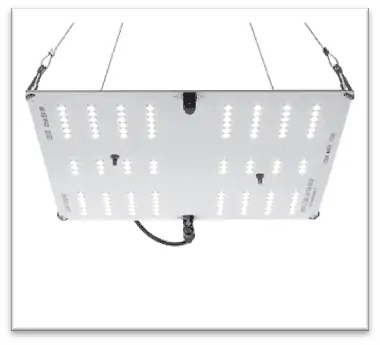
- Photon Efficacy: 2.4 PPE-2.7 PPE
- Area recommendation: At least 37 watts per square foot of flowering canopy. For knockoffs, I recommend 42 watts per square foot of flowering area
- Heat: Their extreme efficiency makes them the lowest heat emitted per watt. Therefore they run the coolest out of all the LED lighting options.
- Penetration: Same as cheap LED, but better: instead of multiple weak light sources, its multiple medium-intensity light sources. This equates to better penetration per watt when compared to cheap LED and COB LED.
- Brands to avoid: Avoid Mars Hydro. “Knockoffs” can use counterfeit parts. Use Caution.
- Cost: $0.60 – $ 0.80 per watt “knockoff”. $1 -$2 per watt name brand. Spend more than this, and it’s not likely worth it. Being an LED, the bulbs on these lights tend to last 4-10 years, depending on the manufacturer.
The Takeaway
The bottom line: To get started, buy lights with as high of a PPE value as you can get, with the lowest wattage necessary per square foot, within the cooling and ventilation abilities of your garden environment.
Then, save your pennies and buy a high-quality Quantum Board LED from a reputable vendor. To help you understand what I mean, I’m going to list a couple of example scenarios, and then give my recommendations.
Example 1
Tracy has a 3ft x 3ft closet with only the fresh air from her bedroom that she plans on using for Garden. Though its climate-controlled, the air conditioning is a couple of rooms away in the living room area. Tracy has a budget of $300 for lighting her grow space.
Since Tracy has some ventilation, she’s not forced to use CFL. But, since she doesn’t have active air conditioning in the room, this rules out all HID lighting for her. That leaves only inexpensive LED, COB LED, and Quantum Boards for consideration.
Since her grow area is 9 square feet (3 feet x 3 feet = 9 feet) and she has $300 to spend, she can afford the “knockoff” Quantum Boards.
Tracy should carefully research an inexpensive “knockoff” Quantum Board(s) to use in her indoor grow. ( 9 square feet x 42 watts per square foot (min) x $0.8/watt cost = $303)
I would recommend two ~240+ watt Quantum Board(s), spread evenly apart, that put out the appropriate amount of PPFD across the most canopy area. About $300 including shipping.
Example 2
Jenny has a 4 x 8 ft area set aside for her indoor garden in her finished basement.
Jenny not only has climate control in her basement, but she also has active air conditioning and heating in her basement. Jenny also has filtered air from outside ventilation.
She has a $700 budget to light the entire area.
The total area Jenny is going to light during flower is (4 feet x 8 feet = 32 feet) 32 square feet.
She can afford the CMH option since she has $700 to spend and active cooling with ventilation. (32 square feet x 37 watts per square foot x $.60/watt cost = $710).
We recommend two 630-watt CMH fixtures for Jenny’s indoor garden, spread evenly apart. About $675 for both.
Hope this article helps you make sense of the confusing and technical world of horticultural lighting.
May your grow be fruitful!!
Want to Grow Cannabis? Get Your Medical Cannabis Card!
Enjoyed This Content? Read More:
-
How to Make Cannabis-Infused Coconut Oil or MCT Oil: Crockpot Recipes
In this guide, you’ll learn how to make cannabis-infused coconut oil or MCT oil, decarboxylate cannabis, or choose to infuse cannabis into any oil of your choice.
-
How to Make THC Gummy Bears with Canna Oil
This is a great no-fail recipe for beginners. The corn syrup in this recipe will help your gummy bears have that nice and chewy texture we’ve all come to love.
-
Growing Your First Cannabis Plants: A Beginner’s Journey with Cannabiz Seed
Growing your first cannabis plants can be one of the most rewarding hobbies – but if you’re a beginner, it can also feel a bit intimidating. Don’t worry! Every expert grower started right where you are now. In fact, the founders of Cannabiz Seed began as home growers who faced all the classic newbie frustrations,…
-
Burning Weed Odor Not Cause for Warrantless Search, Rules Illinois Supreme Court
A Landmark Case for IL Medical Cannabis Patient Protections On September 9th, the Illinois Supreme Court issued a major victory for cannabis consumers and patients, declaring that the aroma of burnt cannabis is insufficient probable cause for a warrantless search. Illinois has long been at the forefront of the fight for plant medicine. Medical patients…
-
How to Get a Medical Marijuana Card in Oklahoma: Easy 5-Step Guide
Navigating the process of obtaining a medical marijuana card in Oklahoma can be confusing. This guide provides step-by-step instructions on how to get a medical cannabis card in Oklahoma.


